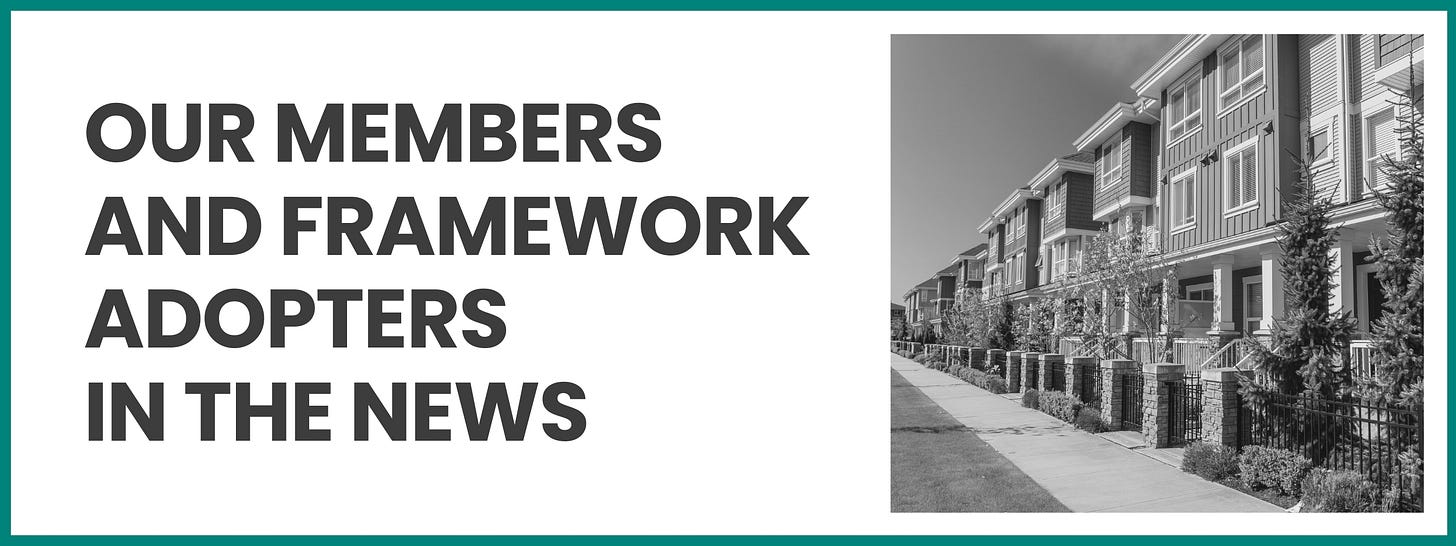Healthy Renters = Healthy Properties
The Financial Upside to Resident Health & Engagement
At the heart of every community are the people who call it home. In our industry, it's easy to focus on amenities, square footage, and occupancy rates—but we’ve come to understand that true success lies in serving the people who call our properties home.
When we invest in resident health and engagement—through wellness programming, social connection, access to resources, and a sense of belonging—we see something powerful happen. Engaged residents stay longer, their children don’t change schools, and they are more likely to recommend their apartment building to their friends. Healthier residents spend less money on emergency services, more money on essential needs like food and clothing and less likely to fall behind on rent. These outcomes aren’t just anecdotal—they translate into stronger NOI, lower turnover, and stable investment portfolios. Simply put, prioritizing well-being isn’t just the right thing to do. It’s a strategic advantage.
As the following Q&A demonstrates, the work of Multifamily Impact Council member Ounce of Care is an excellent example. We spoke with Rachel Munsie and Pooja Doshi Mehta at this organization about its initial focus on health and how it expanded to a program that helps residents holistically—through both health and engagement services. The results are impactful for both residents and multifamily owners and operators.
Bob Simpson
President and CEO
Multifamily Impact Council
Rachel Munsie is CEO and Co-founder and Pooja Doshi Mehta is Head of Business Development & Strategy for Ounce of Care, a nationwide resident services platform, empowering healthy & thriving affordable housing communities.
Do Resident Health & Engagement Impact Property Performance?
We know Ounce of Care goes beyond a health concentration. Why were you both initially focused on health specifically?
Our initial health focus came naturally from our professional backgrounds in digital health. We recognized a critical gap in connecting lower-income residents to healthcare services in a way that felt trusted and accessible. Having worked in healthcare, we understood both the barriers these communities faced and the potential for technology-enabled solutions to bridge those gaps. Health seemed like the most immediate and impactful place to start, given the clear need and our existing expertise in navigating healthcare systems.
By Mike Kingsella, Founder and CEO, Up for Growth
Throughout my career, I have had the opportunity to visit a wide variety of communities across the country – from small towns and suburban communities to our biggest cities. These visits have made me realize that our inability to maintain an adequate supply of affordable housing is no longer just an urban story. In fact, housing supply shortfalls in our rural communities are expanding three times faster than our cities.
Have news to share? Send your links to MultifamilyImpactCouncil@thesmartagency.com and we’ll spread the word in this newsletter and on our LinkedIn page.
Missed our Last Newsletter? Read Here.
©2025 LinkedIn Corporation, 1000 West Maude Avenue, Sunnyvale, CA 94085. LinkedIn and the LinkedIn logo are registered trademarks of LinkedIn.
Multifamily Impact Council | 1615 East Edgewood Road | Sioux Falls, SD 57103 US












